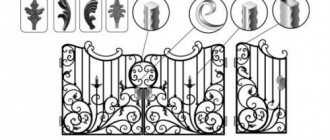Author: ProfGid
A carpenter is a specialist who, using mechanical processing, transforms wood into a variety of building materials and structures. By the way, in 2022, the ProfGid career guidance center developed an accurate career guidance test. He himself will tell you which professions are suitable for you, and give an opinion about your personality type and intelligence.
A common misconception is that carpenter and joiner are the same profession. Indeed, both of them work with wood, but there are a number of significant differences. A carpenter most often processes large wood, carries out a rougher, physically more difficult part of the work, in which there is no artistic component.
A carpenter, on the contrary, takes on more subtle and precise tasks related to decorative design and requiring good artistic taste.
Responsibilities
First of all, it is worth understanding what is included in the professional responsibilities of a wood craftsman, as well as what skills and knowledge he needs to work.
So, the professional task of a carpenter is that he:
- builds, installs and repairs various structures made of wood (baths, saunas, residential buildings);
- erects fences and scaffolding from wood;
- performs finishing and formwork work;
- produces beams, arches and supports for power lines;
- treats wood with chemical compounds that protect the material from fires and also prevent the wood from deteriorating prematurely;
- carries out various processing of timber;
- erects floors, assembles suspended ceilings;
- installs windows, as well as entrance and interior doors;
- lays floors;
- erects walls from logs and beams;
- installs rafters and trusses;
- manufactures formwork for structures such as galleries, bunkers, and tanks.
To perform tasks efficiently, you cannot do without knowledge:
- about tree species, since each of them requires an individual approach;
- the basics of drawing, in order to be able to read other people’s drawings and work according to the specified task;
- physics and mathematics, as well as how to apply the necessary formulas in practice;
- on how to use a wide range of tools.
Important!
Care and precision when working with tools will help avoid possible injuries.
It is important that a woodworker be able to apply not only theoretical knowledge in practice, but also have the following skills:
- competent distribution of the sequence of work;
- well-developed motor skills;
- ability to work with an axe, hammer, chisel, adze, miter box, saw, plane, glass cutter, tape measure, pliers, levels, square, screwdriver, chisel, nail puller, plumb bob, cutter knife;
- ability to handle chemicals to treat wood and protect it from fires and fungi.
Carpenter - who is he?
Let us immediately note that you should not confuse a carpenter with a carpenter, because if we talk about the latter, then this is a person who processes wood, and also turns it into parts, building materials, various non-standard designs, and a carpenter makes a work of art from simple parts.
A carpenter is a person who carries out woodworking and makes wooden objects using technology and in combination with other materials. The era of ancient Egypt is considered the time period when such a profession as a carpenter appeared. The master knows how to create arches, doors, windows, cornices and baseboards, stairs, and various pieces of furniture.
In addition, he can:
- Process wood.
- Restore wood products. Install door and window structures.
- Install locks and different types of fittings.
- Install furniture.
- Repair wood products.
- Polish and grind.
A high-class specialist is able to do wood carving, burning and even varnishing.
Professional Features
Becoming an excellent specialist is not so easy, and a number of requirements are placed on a carpenter.
So:
The applicant must be in good physical shape.- There should be no diseases of the cardiovascular system, nervous system, musculoskeletal system, or respiratory system.
- Must have an aptitude for working with wood.
- A person must be attentive, diligent, and careful.
- Know the specifics of processing wood of different species.
- Improve knowledge.
- Keep up with technology.
- Learn new tools and technologies.
The rank is an indicator of the carpenter’s performance, and there are as many as five ranks:
- The second one is the lowest. Such a worker can be allowed to perform the simplest work - manual planing, cleaning and gluing parts.
- The third one makes it possible to perform more important tasks, namely, installing the rear walls of structures, trimming overhangs, gluing overlapping parts, and repairing wooden wheels.
- Fourth - you can assemble units, prepare surfaces for cladding, drill holes for screws and repair furniture.
- Fifth - allows the craftsman to make simple pieces of furniture, sand and clean coated parts, carry out restoration and repair work on products, and perform work on a woodworking machine.
- The sixth is the tallest. Such a specialist is capable of making artistic furniture, assembling cabinet furniture, repairing components and parts, and also carrying out restoration work for cabinet furniture and replacing parts.
Let's look at what responsibilities carpenters have.
Job responsibilities
The difference between a joiner and a carpenter is that he has different job responsibilities, and this includes both construction and carpentry work. The specialist must:
- Select and sort materials.
- Boil the adhesive composition.
- Be able to process wood both manually and using power tools.
- Make and install various products.
- Be able to clean the part after processing.
- Make and install door and window structures.
- Perform formwork and carpentry work.
- Make, assemble and install semi-circular binding boxes.
- Perform roofing work.
- Lubricate formwork and rolls.
- To tar and cover wood structures with felt and roofing felt.
- Disassemble the floor, fences, ramps, roofing and formwork.
- Finish the surface with dry plaster and other things.
Advantages and disadvantages of the profession
Before becoming a carpenter, you should learn all the benefits and not only of the profession. The advantages include the following:
- Big profit.
- Possibility of mastering a related specialty.
- Demand.
- Career growth.
Among the disadvantages, we highlight the high level of injuries, high health requirements, as well as dangerous and harmful working conditions.
Types of profession
Depending on what kind of work is performed, a carpenter can be a machine operator, furniture maker, or construction worker. The job descriptions of all specialists contain general provisions that are the same for all specializations, and individual provisions, depending on the type of activity:
- The carpenter's instructions contain paragraphs on the rules for working with woodworking machines.
- The instructions for a furniture maker or carpenter in furniture production contain items on the creation, assembly work and installation of furniture.
- Construction carpenters have clauses in their instructions about finishing houses.
- Joiners-carpenters have in their instructions the same points as a simple carpenter + carpenter.
The job description of a carpenter and machine operator in a furniture workshop combines the requirements for three related specialties - carpenter, machine operator and furniture maker.
A carpenter
There are differences between a joiner and a carpenter. A carpenter is a person who is engaged in mechanical processing of wood and turns it into materials for construction, as well as for finishing work. The carpenter profession has a thousand-year history.
Such a master is capable of:
Erect and carry out repair work on timber structures.- Install natural wood fences and scaffolding.
- Make your own arches, beams, wooden supports and even decking.
- Hew, drill, saw and join wood elements.
- Perform processing of timber using chemical compounds and other things.
Carpenters have an incredible responsibility on their shoulders, and the longevity of the structure will depend on the quality of the work.
Main responsibilities
For each specialization, there are clearly established procedures and boundaries of responsibility, which make it possible to regulate disputes, as well as identify the degree of involvement of each participant in the process.
Please note that a carpenter's job description usually includes a list of skills that he must possess, and exceeding the standards of skills and knowledge will be encouraged, but not required.
If a worker reaches a level that exceeds his current rank, management may offer the foreman an increase in salary or position. But in practice, what often happens is that the employee himself is asked to reconsider his qualifications.
The main functions of a carpenter include the following types of work:
- Formwork, when it is necessary to erect load-bearing structures in the construction of a building.
- Carpentry, when careful processing of wood is not needed, but execution requires great engineering precision.
- Overlapping the roof, while with increasing discharge the complexity of the design will increase.
- Civil works.
By the way, the latter type includes a wide range of tasks, the list and implementation of which will depend on the carpenter’s qualifications, as well as individual instructions.
Construction
If we are talking about construction, then the carpenter performs, in addition to the previously mentioned work, the following:
- Material procurement, installation, replacement and dismantling work for wooden roof structures.
- Fastening structures made of wood to those made of metal.
- Cutting the internal walls of the building, as well as partitions.
- Creation of temporary buildings, premises for technical needs and dismantling after construction is completed.
- Installation of flooring, ceilings and cladding.
- Installation of wood products and structures.
- Installation of window and door frames.
The list clearly shows what carpenters do at a construction site. It becomes clear that such labor activity will be in demand at every stage, from the beginning to the very end of construction.
Housing and public utilities sector
The difference between a carpenter and a joiner is that in the housing and communal services sector the former is in great demand. The functions it will perform mainly include roofing work.
This includes developing a plan for restoring the damaged coating, drawing up a repair sketch, and also creating and installing all structural parts. For such a labor-intensive process, a carpenter must have a wide range of skills and knowledge.
For this reason, a carpenter-roofer in the housing and communal services sector is a sought-after specialist who is responsible for the quality of work.
Healthcare
Like any other infrastructure object, the building of medical institutions also requires constant costs to maintain and restore lost integrity. The job responsibilities of a carpenter in a regional hospital will even be of a collective nature.
For example, minor repairs of wooden parts and structures, creation of pallets and boxes for transporting instruments and their dismantling when receiving a parcel for the organization.
Places of work
A person who has been educated as a carpenter will be able to get a job in a construction company, a factory repair shop, or in the housing and communal services sector. Specialists in this profession are often required by woodworking companies and mills, as well as on construction sites.
In addition to official work, a carpenter can engage in so-called freelancing. In other words, the artisan does not need to be assigned to any company or other official institution. He can also engage in part-time work, that is, he can independently look for customers and receive money for high-quality execution of orders.
Did you know?
One of the famous carpenters was Peter I, who in 1697 took part in the construction of the frigate “Peter and Paul”.
III. Rights
A carpenter of the 4th category has the right:
1. Request and receive the necessary information, as well as materials and documents related to issues of their activities.
2. Improve your qualifications, undergo retraining (retraining)
3. Take part in the discussion of issues included in his functional responsibilities.
4. Make suggestions and comments on how to improve activities in the assigned area of work.
5. Require the management of the organization to provide assistance, including ensuring organizational and technical conditions and execution of the established documents necessary for the performance of official duties.
6. Make independent decisions, guided by qualification requirements and job responsibilities
7. ___________________________________________________________
Specialization, career and prospects
It may seem that the carpenter profession is quite stable and there is no point in expecting career growth in this direction. However, in reality everything is completely different. A master can develop in several directions, and we will tell you which ones further.
The first area that is worth paying attention to is increasing the working category - a carpenter can increase the level of his skill from the second category to the seventh.
Let's briefly describe each of them.
- The second category is the simplest, it can also be called basic. A craftsman of this level does not need to have a special education; it is enough for him to know the basic principles of the work of a carpenter.
- Third , the skill of independently selecting lumber and marking is added to the basic skills.
- Fourth , knowledge is added on how to build a wall frame, how to connect wooden elements, and the ability to recognize the main components of those parts of the building that are made of wood.
- Fifth - a specialist of this category is able to work with drawings and special equipment that is more difficult to use, and can also deal with more complex tasks.
- The sixth and seventh categories are the most difficult. If at the previous stages of development the master may not have had a special education and was content with his own developments and practice, then at the last two stages it is important to understand the engineering part of the work.
Having reached a conditional “ceiling” in his craft, a carpenter can expand his scope of activity and engage in other activities that have something in common with carpentry.
Thus, a master can engage in more artistic work on wood, namely: master the profession of a carpenter or learn wood carving. He may also become a concrete carpenter.
Another trade worth considering is cabinetry. People in this profession are busy restoring antique pieces of furniture made from expensive wood. This is painstaking work that is generously paid on the labor market, since this is not the most common type of activity.
The best colleges for studying
Among the capital's secondary schools, the following are popular among applicants:
- College of Modern Technologies named after. M. Panova;
- Moscow College of Architecture and Urban Planning;
- Educational complex "Capital";
- Technological College No. 21;
- Frame 26 (College of Architecture, Design and Reengineering No. 26), etc.
Among the regional colleges we can name:
- St. Petersburg: College of Industrial Technologies “Krasnoderevets”, College of Metro Construction, College of Water Resources;
- Novosibirsk: Novosibirsk College of Architecture and Civil Engineering;
- Perm: KIT, Perm College of Industrial Technologies;
- Cheboksary: College of Transport and Construction Technologies; • Ryazan: Construction College named after. V. Beglova;
- Krasnoyarsk: Krasnoyarsk Assembly College, KPT (Polytechnic College), etc.
By introducing new and improving old training programs, colleges are trying to expand the list of student competencies to ensure their competitiveness and mobility in the labor market.
Carpenter salary
Over the past year, the average salary of a carpenter in Russia has increased from 40 thousand to 45 thousand rubles. This is exactly the amount per month received by specialists working in Novgorod and surrounding areas.
The salary in the Khanty-Mansi Autonomous Okrug is slightly lower - about 44 thousand rubles. Carpenters from the Yamalo-Nenets Autonomous Okrug earn the same amount. In the Moscow region, as well as in Dagestan, you can earn up to 42.5 thousand rubles from carpentry.
The average income of woodworkers in Kamchatka, the Volgograd region, the Republic of Sakha, the Udmurt Republic, and the Republic of Tyva is up to 37 thousand rubles.
Occupational diseases
Carpenters often have to work in unfavorable conditions, due to which they receive increased wages. At the same time, admission to such a profession may be denied due to a number of medical contraindications. These include lesions of the musculoskeletal system, deformities of the fingers, pathologies of the respiratory system, cardiovascular and nervous systems. Also, the applicant should not have problems with balance and coordination.
The particular working conditions of carpenters increase the risk of developing a number of diseases. Inhalation of dust and vapors of chemical compounds can cause problems with the respiratory system and allergies. When working with hand, power, or power tools, there is a high risk of injury. Increased load on large and small joints threatens arthritis and rheumatic diseases in old age. Carpenters and machine operators often experience hearing loss.
Who is the profession suitable for?
Working with wood is not as simple a task as it might seem at first glance. To become a professional in his field, a novice carpenter must have a certain set of qualities, thanks to which he can avoid the most common risks of the profession and actively develop in his chosen direction.
Carpenters, as a rule, are men, and there is an explanation for this: working with wood involves a lot of physical activity, which few women can handle. That is why it is important that the master’s physical training is at a high level.
This profession can only be suitable for those who have sufficient perseverance, the ability to concentrate on their task and not be distracted by extraneous sounds - this is fraught with damage and injury.
A person who is able to absorb a large amount of information, has a high level of knowledge of mathematics, physics and can work with drawings can begin his development in the field of carpentry.
Did you know?
Carpenters are often confused with joiners because both trades are closely related to woodworking. However, carpenters, unlike joiners, engage in rougher wood processing and work with more voluminous, bulky material. In order to become a good specialist, it is not necessary to have artistic taste - it is enough to have good eyesight and a trained eye.
In addition, the profession of a carpenter is suitable for people who have good coordination, composure and accuracy.
Safety
Training of workers in safe labor methods is carried out in all organizations and enterprises, regardless of the degree and nature of the production hazard. The organization of training for the enterprise is entrusted to a special commission created by order of the head of the enterprise.
Control over the timeliness of training and its quality is carried out by the labor protection department. Registration of training for each new arrival at the enterprise is carried out in a special journal.
Workers who have undergone special training and instruction, as well as safety training and medical examination are allowed to work.
There are medical contraindications for becoming a carpenter:
- neuropsychiatric disorders;
- allergy;
- musculoskeletal disorder;
- hypertension, other cardiovascular diseases;
- eye diseases.
Demand - is it easy to get a job?
There is an opinion that blue-collar professions today are in demand only in the suburbs and villages, but we hasten to dispel this myth: carpenters often work on construction sites and in various companies related to wood processing.
Since both construction sites and wood processing industries are usually located in large cities, a carpentry specialist will definitely not have to sit idle.
The only thing that can affect employment is the length of work and the rank of the master. Carpenters with more experience and higher grades find it much easier to find work.
Don’t forget that you can engage in carpentry not only in official institutions, but also take on part-time work: the construction of houses, dachas and other structures has not been canceled, so there will always be something for an experienced craftsman to do.
Among other things, this profession is closely related to one of the most common environmental materials - wood, and interest in the topic of ecology is growing every day: although plastic products are common, wood is safer for life.
That is why consumers are increasingly paying attention to wooden products and giving them preference. In connection with the development of environmentally friendly production, there is no doubt that a qualified wood craftsman will easily find a job.
Plane
To regulate the thickness and level the surface of a wooden product, carpenters use a tool such as a plane. The design of this tool is represented by a block with a through hole and a cutter made of hardened steel. In addition, the tool also has auxiliary elements that allow you to adjust the inclination and degree of pressure to the surface being processed. The plane block can be either wooden or metal. A metal plane is perfect for working with hardwood, and a wooden one is ideal for working with all other types of wood, providing easy gliding, which not only speeds up the work process, but also makes it much more comfortable.
Types of planes:
- The most popular type of plane among carpenters is the Scherhebel, which is used for rough preparation of material obtained by sawing.
- A jointer or semi-jointer is designed for leveling and smoothing large surfaces.
- Tsinubel has a concave shape of the cutter, which is why small tracks remain on the wood, which will be glued after finishing the work.
- The sander has a short body and is suitable for processing wood that has burrs. The tool is also widely used for grinding ends, which ensures a perfectly flat surface after processing.
How to become a carpenter
In ancient times, the craft of a carpenter was mastered exclusively through practical training - masters recruited students and passed on all their skills and abilities. Now you can learn carpentry in all kinds of technical schools, schools and colleges, where students receive secondary specialized technical education.
Important!
In higher educational institutions, the craft of working with wood is not taught, but a carpenter who has already received a secondary specialized education can improve his rank and climb the career ladder. To do this, you need to obtain a higher engineering education.
Of course, it is possible that a person initially has “golden hands” and learning occurs through independent practice, but with the help of such education, only a few with innate talent can become highly qualified carpenters.
In educational institutions, contrary to popular belief, carpenters receive not only practice, but also a lot of theoretical knowledge. This is necessary so that the task is designed correctly and the master does not have to redo the work several times.
Hacksaw
A hacksaw is necessary for cross-cutting a wooden workpiece. The tool consists of two elements - a handle and a blade made of durable steel. The bottom of the blade has small private teeth, and the blade itself is flexible enough to prevent breakage during operation. The handle of a hacksaw is usually made of wood or plastic. The tool is capable of sawing not only wood, but also pressed materials, which makes it a wide-profile tool.
The following types of hacksaws are distinguished: wide and narrow hacksaw (used for cutting complex shapes), bow and backed. The carpenter, based on the required type of cut, can easily select one or another hacksaw to guarantee high quality work.
Requirements for a carpenter
As we have already said, to become a carpenter, you must have certain qualities and skills.
So, a future woodworking master must have:
- physical endurance;
- neatness;
- ability to concentrate;
- attentiveness;
- spatial imagination;
- good vision and, in particular, an eye;
- basic knowledge of mathematics and physics, the ability to use them in practice;
- skills in working with carpentry tools (axe, hammer, nail puller, drill, saw and others);
- the ability to distinguish between types of wood and knowledge of how to process various materials;
- skills in working with drawings and the ability to read them;
- developed gross motor skills;
- lack of fear of heights;
- secondary specialized education (not required, but encouraged).
To summarize, we can say with confidence that the profession of a carpenter is not entirely simple and requires effort - both physical and intellectual. However, it is still prestigious to this day, which means that a master who is actively developing in this area will never be left without work.
Important qualities
A penchant for working with hands, artistic taste, developed eye, spatial imagination, correct color perception, good eyesight and hearing, coordination of movements, accuracy, attentiveness, balance.
Diseases accompanied by loss of consciousness, rheumatic diseases, skin diseases, and impaired coordination of movements can be considered contraindications for carpentry work.
However, some operations (sawing, planing, polishing small parts, fitting components, mounting on small tabletop equipment using hand and power tools) can be performed by people with limited leg mobility.
Peculiarities
Working as a carpenter involves using a tape measure, a saw, a chisel, a set of screwdrivers and hexagons. These are basic devices. Many operations are performed on machines, but the process cannot be completely automated.
Carpentry activities include artistic work and brute force. Technique is important. Even with the help of tutorials, a person without experience cannot build a house. Working as a carpenter is similar to carpentry, but the differences lie in the processing of large elements.
Advantages
The main advantage of the profession is its demand. Carpenters are needed everywhere, so there will always be work. A plus is the prospect of career growth. This refers to improving the level of skill. A carpenter working on a construction site can switch to a furniture carpenter or cabinet maker. And this indicates an increase in wages.
Carpenter skills can be used not only at work, but also at home. At home, a master can independently carry out repairs, make furniture or other necessary things. This allows you to save significantly.
Carpenters need to be able to read blueprints, know stereometry, and have a developed memory. Work improves logical thinking and eye. Such skills are needed to solve many everyday problems. A master can have not only a main income, but also an additional income, since he can do part-time work.










